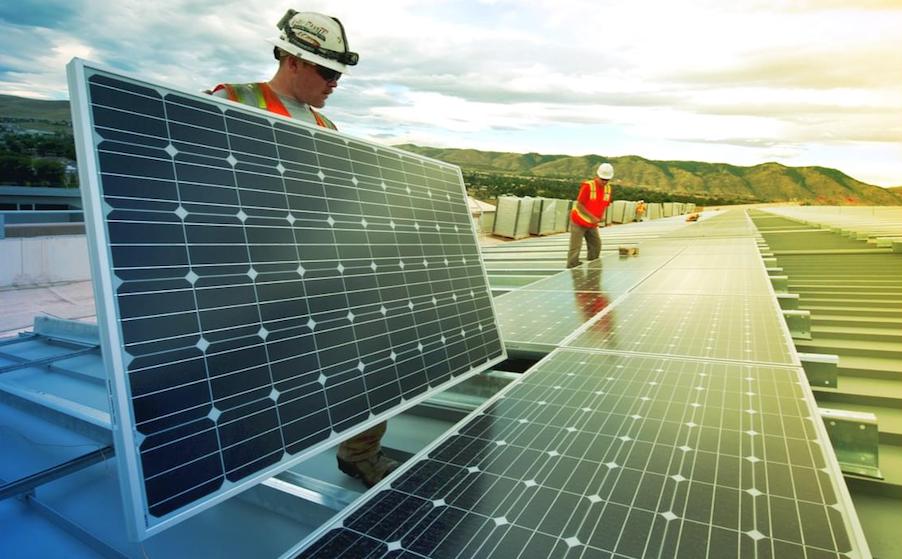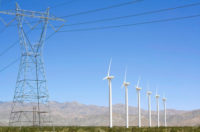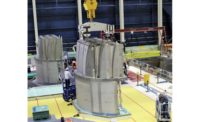FERC Talks Technology, But Clean Energy Innovators Say Actions Hurt Sector

While the Federal Energy Regulatory Commission touts a new regulation that lets innovative technologies compete in regional wholesale power markets, renewable energy producers and industry observers say other recent agency rules and decisions are keeping clean energy sources from being a bigger part of the U.S. power grid.
“It’s a tangled web,” says Paul Patterson, a sector financial analyst for Glenrock Associates.
The Solar Energy Industries Association on Sept. 18 asked the U.S. appellate court in San Francisco to review a FERC order issued in July that the trade group claims discourages development of small-power generators—known as qualified facilities or QFs—which generate no more than 80 MW.
Federal law requires FERC actions to encourage development of small generators, but the agency's recent order eliminated the right of those resources to enter long-term, fixed-rate contracts, "which play an essential role in financing of QFs,” wrote agency Commissioner Richard Glick in a lone dissent to the July order.
The FERC-approved changes will discourage QF development, said the solar energy group in its court filing, terming it an “attack on competition that protects the interest of incumbent utilities."
The association notes that the agency "has indicated it will provide for further consideration of its order," but filed the lawsuit "should FERC’s reconsideration be insufficient."
SEIA asked the court to delay the order for 60 days to enable a FERC revision.
Mixed message
The lawsuit followed by one day FERC's Sept. 17 draft rule it called “historic,” a “landmark” and “bold action” that empowers new energy technologies to participate on a level-playing field in wholesale electric markets. The agency said the regulatory change further enhances competition, encourages innovation and drives down costs.
Specifically, the rule allows distributed energy sources to be bundled into a size large enough—but not exceeding 100 MW—to compete with traditional power plants and other resources in all regional wholesale electric markets.
Sources range from rooftop solar arrays, electric storage and intermittent generation to distributed generation, demand response, energy efficiency thermal storage and electric vehicles and their charging infrastructure, FERC said.
“Today FERC broke new ground toward creating the grid of the future by knocking down barriers to entry for emerging technologies,” FERC Chairman Neil Chatterjee said.
The policy shift will improve competition and provide flexibility that will support electric grid reliability and resilience, said Jeff Dennis, managing director and general counsel for Advanced Energy Economy,, an advocacy group for that sector.
Letting resources participate together as "virtual power plants" in wholesale markets is a victory for consumers, according to Kelly Speakers-Backman, CEO of the Energy Storage Association .
Grid-Locked
But others are less enthusiastic.
The commission continues to erect barriers to new technologies through its minimum-offer pricing (MOPR) rule, says Gregory Wetstone, president and CEO of the American Council on Renewable Energy, with Glenrock analyst Patterson also noting its many complicated provisions.
FERC also rejected on Sept. 4 a proposal by the New York Independent System Operator, the not-for-profit corporation responsible for operating the state's bulk electricity grid, which is designed to more accurately account for the expected transition to cleaner energy now being driven by changes in New York state law. Under the proposal, NYISO would allow offshore wind, solar and other renewable resources to compete against fossil-fired power.
Commissioner Glick again dissented, contending that NYISO had proposed a series of minor “but extremely reasonable changes” that reflect the state’s new commercial and regulatory realities for power delivery.
The changes represent the “practical realities in New York” where resources that satisfy climate goals are more likely to get built. A recent state law accelerates permitting and construction of large renewable energy projects, he said.
Glick called the rejection FERC’s latest attempt to block New York’s transition to a clean energy future.
Wetstsone says FERC took a similar action several years ago affecting the PJM regional transmission organization, which operates the grid for 12 eastern and midwest states and Washington D.C.
“No market can be free until arbitrary resource-specific price floors are eliminated,” he says.
Battery Storage Takes Leap
Even so, clean energy is gaining in mainstream market acceptance.
Demand for large-scale battery storage systems in the U.S. grew to 125 projects totaling 869 MW in 2018, up from seven projects totaling 59 MW in 2010, the U.S. Energy Information Agency said in July. Two more were added in September.
Germany-based juwi, a renewable energy firm with a U.S. location in Colorado Springs, signed a power purchase agreement on Sept. 21 with Colorado Spring Utilities for a 25-MW four-hour battery storage system coupled with a 175-MW solar project. The battery will be linked to the project and the city’s electric grid with a discharge duration of four hours. Construction will be completed in 2023.
Tennessee Valley Authority also said in September it is installing its first grid-scale battery storage system near an industrial complex outside Knoxville, Tenn. The 80-MW project, to begin operation in 2022, will provide power to industrial customers and improve the quality of electric service to local manufacturing plants without added transmission lines, the public power provider said.
The project will be a test bed to help TVA make broader use of the technology. “We are at the forefront of using large-scale battery storage,” says Dale Harris, a TVA senior manager who leads R&D. “TVA is building the energy grid of the future.”
Suppy-Chain Expands
In yet another shift, General Electric said in September it will focus its energy business on renewables, five years after spending $10 billion to buy a coal-fired turbine company. GE is opting for a power generation sector with attractive economics and a growth trajectory, Russell Stokes, senior vice president of the company’s power portfolio, said Sept. 21.
The next day, GE announced that its renewable energy unit finalized supply contracts for 190 of the firm’s new 220-meter, 13-MW Haliade-X offshore wind turbines for the Dogger Bank wind farm off the U.K.’s northeast coast. The turbine is an enhanced version of its just developed, record size 12-MW unit.
“We continue to innovate, enhance and develop the Haliade-X platform to meet market demands to deliver offshore wind,” says John Lavelle, CEO of GE Renewable Energy. The company considers Haliade-X a “platform” that can boost output without a new design, he says. The company sees a global turbine market set to reach $30.5 billion by 2025.
Dogger Bank, set to be the world’s largest offshire wind farm at 3,600 MW over three phases, will also be the first global installation of a 13-MW turbine. Turbine installation is scheduled to begin in 2023.
The contract with GE is subject to the Dogger Bank development joint venture reaching financial close on the first two phases, expected later this year.
In its decision to exit the new build coal power market, GE said it expects divestitures, site closings, job layoffs and “appropriate considerations for publicly held subsidiaries.” It will continue to support customers with existing plants and continue to deliver turbines for the nuclear market, the company said.
Also Fluor Corp. and joint venture partner COOEC-Fluor Heavy Industries received a contract Sept. 17 to fabricate jackets and suction caissons for the Seagreen offshore wind farm located off the coast of Scotland in the North Sea, owned by Seaway 7, the renewables business of Subsea 7.
The units will be fabricated in at the joint venture’s fabrication yard in Zhuhai, China, which is one of the world’s largest, Mark Fields, president of Fluor’s energy and chemicals business, said. The scope of work includes fabrication and load-out of suction caisson jackets.
Fluor CEO Carlos Hernandez said the China fabrication facility that is also serving LNG Canada and other projects is still restricted for onsite activity by the Chinese government.
"However, the majority of our fabrication management team are able to work remotely to progress fabrication efforts," he said. "We do anticipate having the balance of our management team mobilize back into China by year-end, depending on government restrictions."




